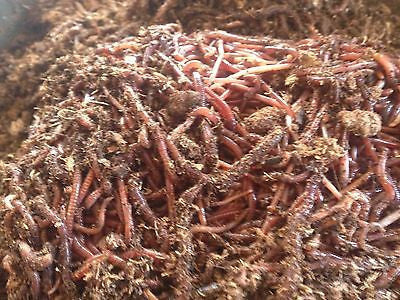The 8-Second Trick For Red Wiggler Express
The 8-Second Trick For Red Wiggler Express
Blog Article
The Best Strategy To Use For Red Wiggler Express
Table of ContentsRed Wiggler Express Can Be Fun For EveryoneAll about Red Wiggler ExpressSome Known Details About Red Wiggler Express Red Wiggler Express Fundamentals ExplainedThe Ultimate Guide To Red Wiggler Express
And the growing Red Worm population? Even in the heap that was established up straight in front of yard composters with existing Red Worm swarms.
Many ranges, including Red Wigglers, European Nightcrawlers, and Lumbricus varieties were brought over from the European continent. Below's the thingNative or not - and as talented as they are at being able to endure in a wide-range of settings and conditions -. In other words, they are far a lot more likely to socialize in any energetic composting systems you have actually established up, than they are to roam off and begin destroying the setting.
Roots require oxygen for respiration and rely on smooth air movement within the soil to prosper. When it rainfalls, dirt can become saturated with water, minimizing the oxygen readily available and impeding nutrient absorption. To preserve an optimum balance, the dirt should enable water to drain pipes sufficiently, leaving sufficient room for air to support origin health and wellness
More About Red Wiggler Express

When it comes to worms for composting, what enters your mind? If you were an earthworm dog breeder, dealership, or simple gardener, then you 'd understand that red wiggler worms are the ideal worms for vermicomposting. To discover even more concerning these planet marvels, checked out a few of the red worm facts below.
(https://helpsellmyfsbo.com/hickory/red-wiggler-express)But if they stretch their bodies, you'll be able to see the red stripes on their skin. When increasing worms such as red wiggler worms, you must have the ability to understand just how to make great usage of them. When you're able to maintain and take care of their environment well, and likewise feed them the right sort of organic wastes, after that they'll have the ability to generate nutrient-packed and quality-rich worm castings for you (likewise known as worm poop or compost).
The smart Trick of Red Wiggler Express That Nobody is Talking About
What do worms eat? Well, these red wriggler worms can be fed with cooking area scraps and garden wastes.

This actions makes them well-suited forever in worm containers, compost heap, and various other confined rooms where organic waste is abundant. Producing an optimal environment for red wigglers requires a thoughtful technique. Consider the complying with crucial aspects to look after red wigglers at home and ensure their health: Use a bed linens of shredded newspaper or cardboard.

Red wiggler worms reproduce by laying small, lemon-shaped eggs in protective cocoons. These cocoons are normally deposited in the bedding and hatch into baby worms within a couple of weeks.
A Biased View of Red Wiggler Express
Their versatility and durability have made them a preferred choice for vermicomposting in different regions around the globe. Yes! They can survive from a variety of 32F to 90F. They are extremely adaptable critters. Think about safety procedures for extremely severe temperatures such as: Shielding the worm container with layers of straw or leaves.

When caring for your red wigglers it is necessary to bear in mind to: 1) K.I.S.S (Maintain it Simple) and 2) whatever in small amounts. These regulations apply to feeding your compost worms, watering your worm containers, and almost everything else entailed in looking after them. Simply bear in mind - you can always include more food later (however it's tough to remove feed once it's been added to a bin!).
Since I fed the red wigglers and compost worms way too much, they weren't able to maintain and gradually the older food went uneaten and produced anaerobic problems that eliminated the worms. The good information is that there are extremely basic activities you can require to guarantee this does not happen! Below're the 6 gold guidelines for how often and just how much to feed your worms: Guideline # 1: Small amounts! You can always include more food later.
Some Known Facts About Red Wiggler Express.
Leftover food will certainly lead to anaerobic problems that will certainly eliminate your live worms. Guideline # 6: After the first feeding, feed the worms 1/3 to 1/2 of their weight.
Report this page